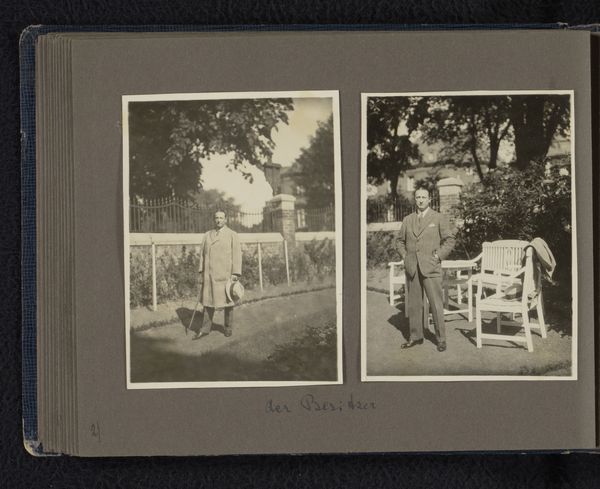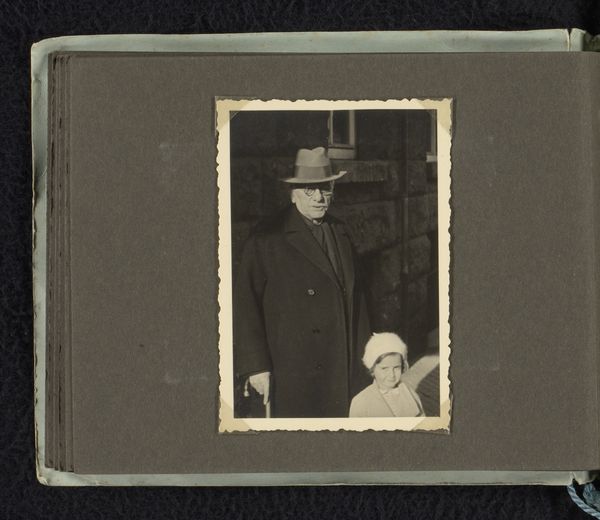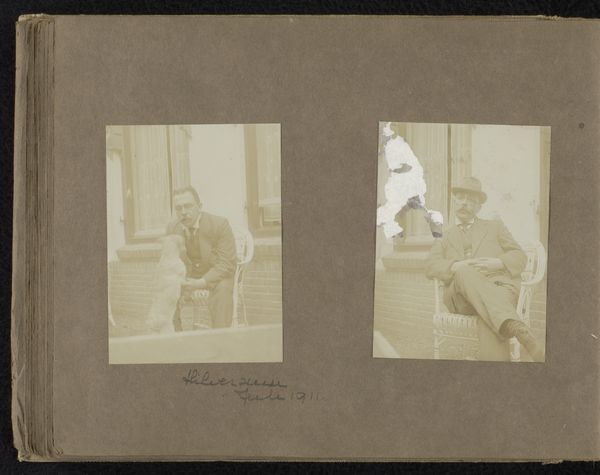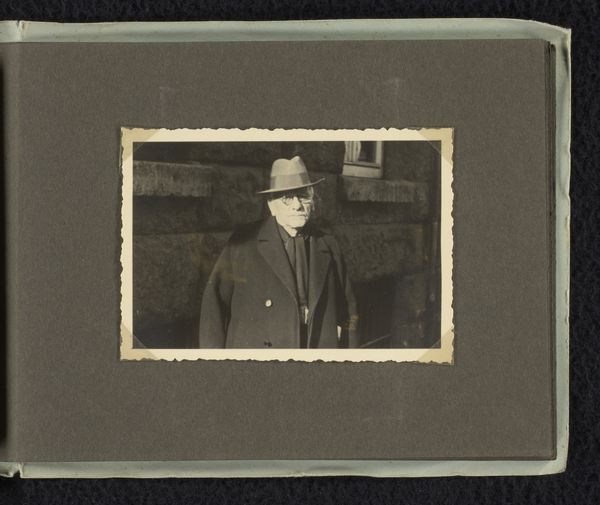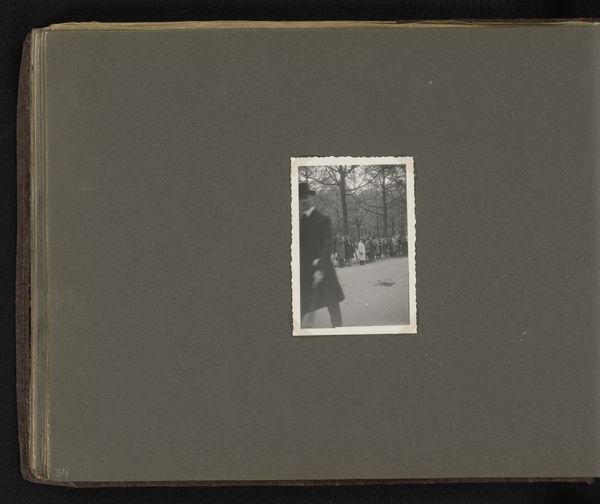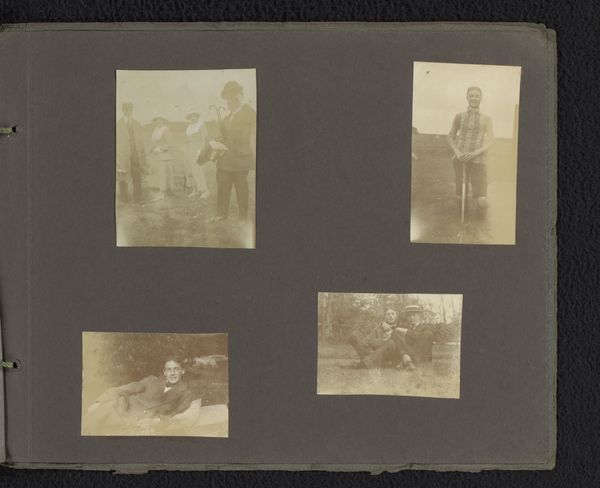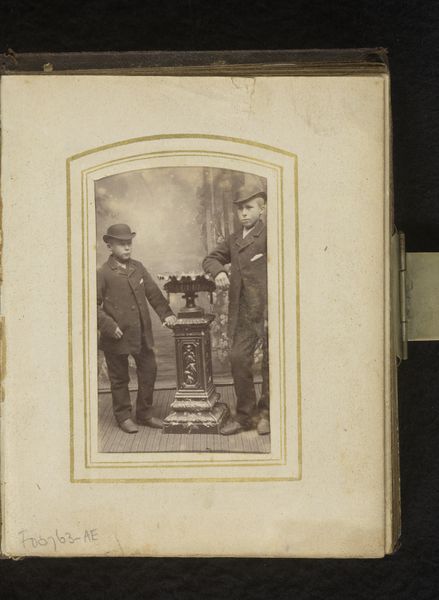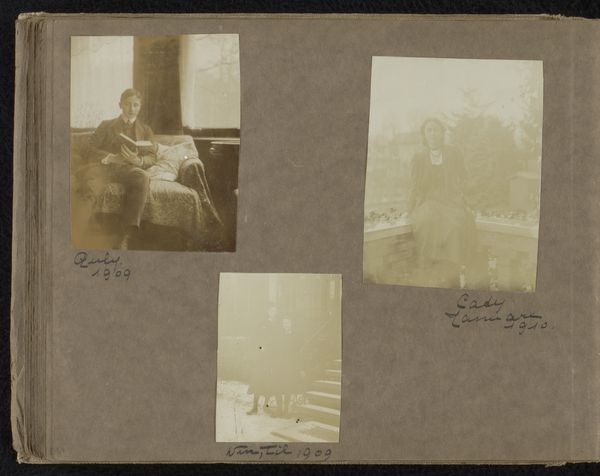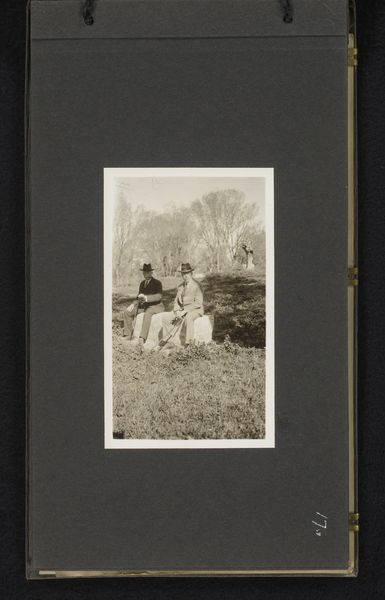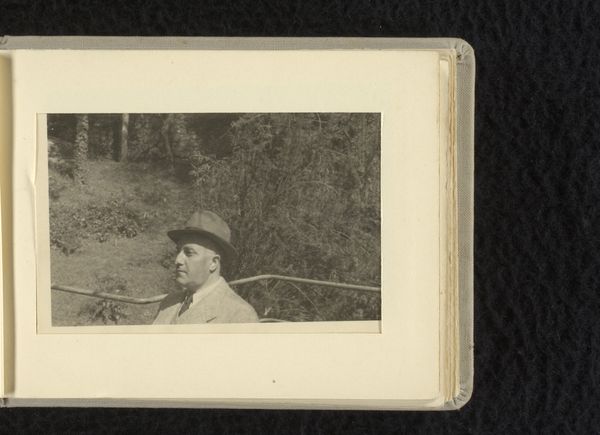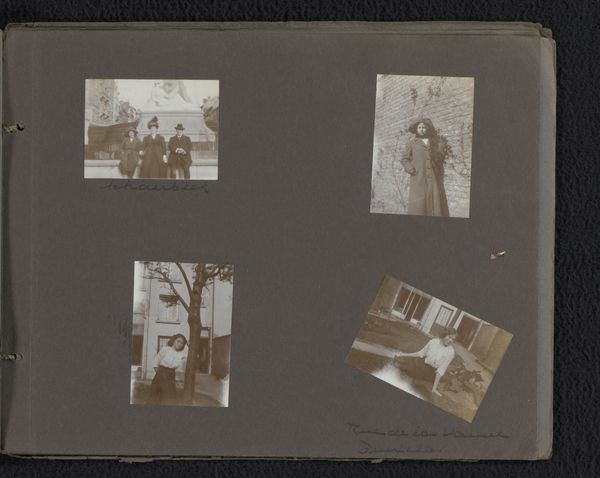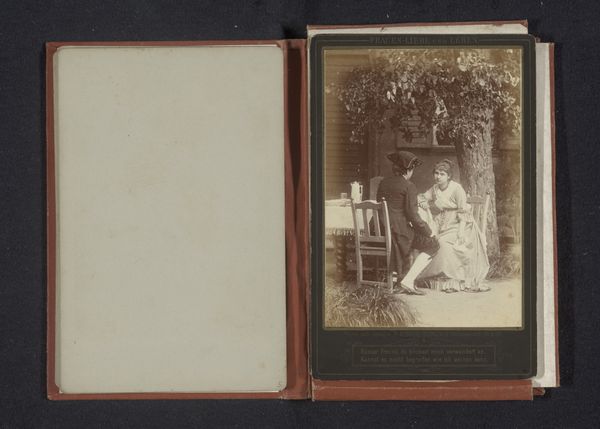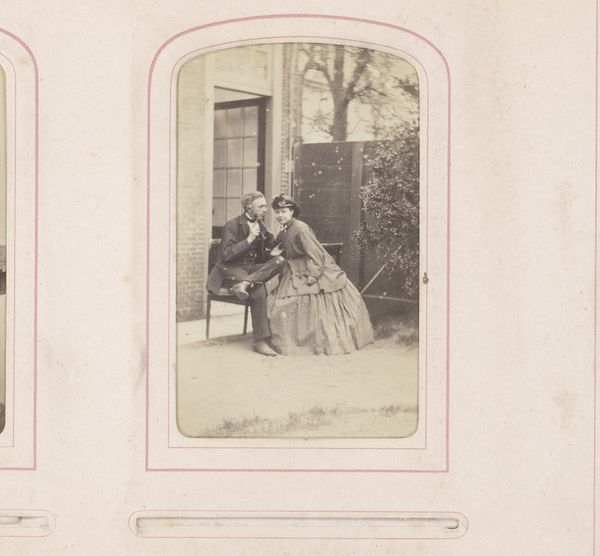
photography
#
portrait
#
photography
#
group-portraits
#
orientalism
Dimensions: height 101 mm, width 60 mm
Copyright: Rijks Museum: Open Domain
Editor: This is an 1895 photograph, “Benoît-Constant Coquelin met een andere man op een veranda” by an anonymous artist. I am struck by the seeming casualness of the composition for a staged portrait. What are your thoughts when you see this work? Curator: From a materialist perspective, consider the context: Photography was becoming more accessible, yet still required specific technologies and processes. This image captures two men— likely from the bourgeoisie— in their finery on what is possibly their veranda. Editor: The figures are dressed in fine suits, but they do seem at ease. Curator: Precisely. Who was invited into this space to produce the photographic object? And for what reason? Who has access to photography and who is behind the lens? Consider the power dynamics inherent in portraiture, specifically during a time when it solidified the bourgeoisie’s power. Editor: That’s interesting. It makes me wonder about how “authentic” the scene truly is, given that the men surely knew they were posing for a photo. Curator: The construction of "authenticity" itself is deeply embedded within material and social practices. Photography served to construct and disseminate images of wealth and power. Think about labor that went into not only producing the photograph, but crafting their image as well: the clothes they wear, the accessories... Editor: So by looking at it through a materialist lens, you're more concerned with the labor and social elements than the aesthetic? Curator: Not entirely dismissing aesthetics, but prioritizing how the social, economic, and technological factors shaped the work and the messages it conveyed. We cannot understand this image without considering photography as a medium itself during this period. Editor: This gives me so much more to think about. I'm not just considering the subjects, but how photography in that time affected social constructs. Thanks so much for this alternative approach!
Comments
No comments
Be the first to comment and join the conversation on the ultimate creative platform.
